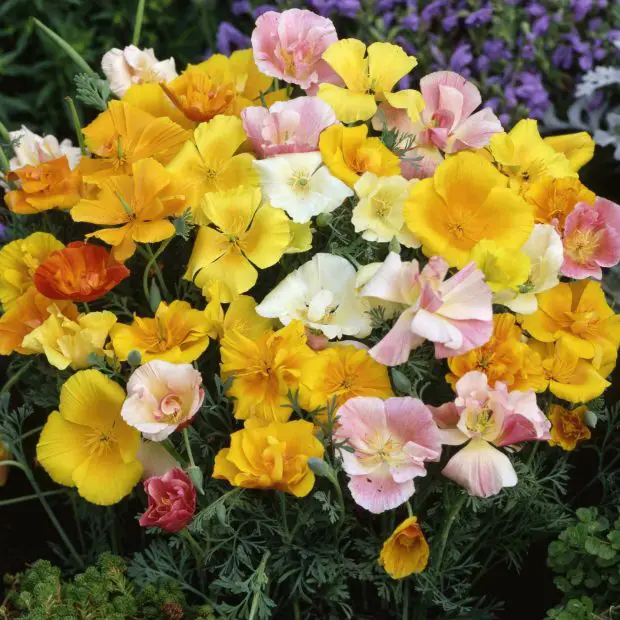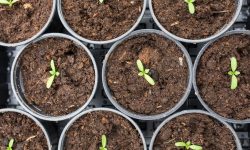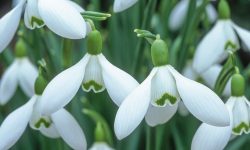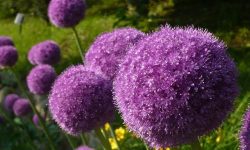. California poppies are among the most captivating wildflowers in the United States, known for their brilliant golden-orange petals that dance in the sunlight. These resilient flowers not only brighten gardens but also transform entire landscapes into breathtaking fields of color during their blooming season. Their unique charm lies in their ability to thrive in various conditions, making them a favorite among gardeners and nature lovers alike.
Beyond their beauty, California poppies hold a rich cultural history and ecological value. They attract pollinators, enrich natural habitats, and symbolize renewal and resilience. Whether you wish to cultivate them in your garden or witness their stunning blooms in the wild, learning when and how they flourish is the key to enjoying their full splendor.
Understanding the California Poppy

The California poppy, also known by its scientific name Eschscholzia californica, is one of the most recognizable wildflowers in the United States. It was officially declared the state flower of California in 1903, symbolizing resilience, renewal, and natural beauty. This poppy thrives in open fields, meadows, and even along roadsides, where its bright orange petals create striking displays in spring and early summer. Its ability to flourish in poor soil and withstand drought conditions makes it a beloved choice among gardeners seeking low-maintenance blooms that deliver bold color.
Beyond its visual appeal, the California poppy has cultural and ecological importance. Native American communities traditionally used parts of the plant for medicinal purposes, appreciating its calming and soothing properties. Today, it continues to be valued not only as a garden flower but also as a source of nectar for bees and other beneficial pollinators. The blossoms open in sunlight and close at night or during cloudy weather, a fascinating feature that adds to their charm. These daily cycles remind us of the flower’s connection to its natural environment and its adaptability to changing conditions.
Gardeners often choose California poppies because they combine beauty with practicality. They reseed themselves easily, returning each year without the need for replanting in most regions. Their tolerance for sandy or rocky soil means they can thrive where many plants fail, bringing life to difficult garden spots. Whether used to create a wildflower meadow, fill containers, or edge pathways, California poppies offer versatility and enduring charm. Understanding the history, symbolism, and growing habits of this flower provides the foundation for successfully planting and enjoying it in your own landscape.
Best Time to Plant California Poppy Seeds
Timing is one of the most important factors when planting California poppy seeds if you want a garden filled with healthy plants and vibrant blooms. These flowers thrive in cool, mild conditions that allow seeds to germinate steadily and plants to establish strong roots before facing the intense heat of summer. Choosing the correct planting window ensures the plants will produce abundant flowers during their peak blooming season, while also reducing the risk of stress or disease.
In most regions with mild winters, California poppy seeds are best sown directly into the soil in fall. Planting during autumn allows the seeds to experience natural cold stratification, a process that boosts germination once the soil warms again in spring. By the time spring arrives, the seedlings are already well rooted and ready to take off quickly, producing flowers earlier than seeds planted later. For gardeners in areas with warmer winters, late fall or early winter sowing often works well, giving the plants enough time to settle before hot weather arrives.
For colder climates, the best option is early spring planting as soon as the soil is workable. This timing avoids damage from harsh frosts while still providing the cool conditions the seeds need to sprout effectively. Sowing too late into summer often results in weaker plants and fewer flowers because of heat stress. By paying close attention to your local climate and soil conditions, you can determine whether fall or early spring sowing is the ideal choice. With the right timing, California poppies reward gardeners with an impressive display of color.
Regional Planting Guidelines
Planting in Coastal California
Coastal California offers one of the most favorable environments for growing California poppies. The mild temperatures, combined with the ocean’s influence, create conditions where the soil rarely freezes and rainfall is more consistent during the cooler months. In these regions, the best time to sow poppy seeds is late fall to early winter. Planting during this window allows the seeds to benefit from natural rainfall and establish roots before spring growth. The result is a more robust display of blooms that last longer into the season.
Another advantage of coastal climates is that extreme heat is less common, so poppies can thrive without the stress of rapid temperature fluctuations. Gardeners can expect continuous waves of blossoms, as the mild winters give seeds ample time to germinate naturally. By allowing the plants to reseed each year, coastal gardens often develop self-sustaining poppy colonies. This approach reduces the need for frequent reseeding and helps create a natural, wildflower-like landscape.
Planting in Inland California
Inland regions of California differ significantly from coastal areas due to hotter summers and colder winters. These areas require more careful timing for sowing poppy seeds. The ideal time for planting is late fall, before the onset of heavy winter frost, so that seeds can germinate once the soil receives seasonal rainfall. Early planting ensures seedlings have time to mature before the harsh summer heat arrives. By establishing roots early, plants are better prepared to survive and bloom beautifully in spring.
Gardeners in inland zones must also monitor soil conditions closely. While natural rain helps with germination, additional watering may be necessary during drier periods to encourage strong growth. Mulching lightly around the seedbed can also help maintain soil moisture, which is particularly valuable in these hotter regions. With proper timing and care, inland gardeners can still achieve a dazzling spring display of poppies, though the bloom season may be shorter compared to coastal areas.
Planting in Northern California
Northern California has cooler temperatures and higher rainfall compared to other regions, which influences the best planting time for poppy seeds. The recommended period is late fall, when seasonal rains begin. This allows seeds to naturally absorb moisture and sprout as winter transitions into spring. The cooler climate extends the blooming season, as plants are not exposed to extreme heat too early in the year. This makes Northern California particularly suited for dense, vibrant poppy meadows.
Because of the region’s climate, reseeding is often effortless. Poppies thrive with minimal intervention once they are established. Gardeners can expect reseeded plants to return yearly, creating a cycle of color without repeated planting. In wetter areas, ensuring proper soil drainage is crucial, as overly saturated ground may reduce germination success. With these considerations in mind, Northern California provides a lush environment where California poppies can thrive naturally, rewarding gardeners with long-lasting displays of brilliant blooms each spring.
Preparing the Soil for California Poppy Seeds
Before sowing California poppy seeds, preparing the soil properly ensures healthy growth and vibrant blooms. These flowers thrive in loose, well-drained soil that prevents excess water from sitting around the roots. Heavy or clay-based soils can hinder germination and cause root rot, so amending the soil is essential. Start by removing weeds, rocks, or debris to create a clean surface for planting. A light tilling will also help break up compacted soil and make it easier for the delicate seedlings to take root.
Adding organic matter such as compost can enrich the soil and provide essential nutrients, but it is important not to overdo it. California poppies are native to regions with naturally lean soil, so too much fertility may encourage excessive foliage at the expense of flowers. Instead, focus on achieving a balance that supports root establishment while maintaining the dry, well-drained conditions these plants prefer. If your garden soil is heavy, consider mixing in sand or fine gravel to improve drainage.
Proper soil preparation also involves setting the right surface texture for seeding. After loosening the soil, lightly rake it to create a fine, even bed. This ensures good seed-to-soil contact, which is vital for germination. Avoid compacting the surface too much, as poppy seeds need light and air to sprout successfully. A carefully prepared soil bed provides the perfect environment for the seeds to germinate quickly and grow into strong, colorful plants that brighten your garden throughout the season.
How to Sow California Poppy Seeds
Sowing California poppy seeds is a simple yet rewarding process that can transform an outdoor space into a sea of color. The key is to scatter the seeds directly into the prepared soil rather than starting them indoors, as these plants dislike being transplanted. Choose a bright, sunny spot where the soil drains well, then lightly rake the surface before spreading the seeds evenly across the area. Unlike some garden plants, poppy seeds should not be buried deeply; instead, gently press them into the soil surface so that sunlight can aid in germination.
Watering plays an important role during the early stages. After sowing, mist the soil lightly to settle the seeds without washing them away. Keep the soil moist but not soggy until germination occurs, which usually takes about 10 to 15 days. Avoid heavy watering at this stage, as excess moisture can cause seeds to rot. Once seedlings emerge, water less frequently to encourage them to develop deep, drought-tolerant root systems. This balance ensures healthy, resilient plants that thrive even in dry conditions.
For best results, thin seedlings once they are about two inches tall, leaving around six to ten inches between each plant. This spacing provides room for growth and reduces competition for nutrients and light. Thinning may seem wasteful, but it helps prevent overcrowding, which can stunt growth and weaken flowering. With careful sowing, proper watering, and adequate spacing, California poppies will establish quickly and produce vibrant blooms that brighten your garden throughout the season.
Caring for Young Seedlings
Seasonal Growth Stages of California Poppies
Germination and Early Growth
California poppy seeds usually begin to germinate within two to three weeks when soil temperatures are mild and moisture is consistent. During this stage, the seeds develop delicate root systems that anchor them into the ground and allow the first small leaves to appear. These leaves are finely divided and soft, giving the seedlings a feathery look. Because the roots are shallow, the seedlings remain vulnerable to drought or disruption, so consistent but light watering is critical to encourage steady development.
As the seedlings continue to grow, they begin forming compact rosettes close to the soil surface. This stage focuses on building strong root structures rather than producing flowers. By strengthening the underground system, the plants prepare to support future growth. It is important during this time to avoid overcrowding, as seedlings planted too close together will compete for nutrients and light. Thinning weaker plants helps ensure healthier, more vigorous growth that leads to abundant blooms later in the season.
Vegetative Development
After germination, California poppies enter a vegetative stage where their feathery foliage expands more rapidly. The plants spread outward in low mounds, producing finely cut gray-green leaves that are both drought-tolerant and attractive in the garden. At this point, the plants become better established, and their root systems deepen, enabling them to withstand drier conditions and less frequent watering. Adequate sunlight is crucial, as poppies thrive in open spaces where they receive direct light for most of the day.
During vegetative growth, the plants continue storing energy for the coming flowering phase. Gardeners can assist by maintaining well-drained soil and removing competing weeds to prevent stress. This is also the stage when self-sown poppies adapt to their environment, creating naturalized colonies that return year after year. While flowers have not yet appeared, this leafy development sets the foundation for colorful displays. Patience during this period is rewarded once the weather warms and the plants shift into blooming mode.
Flowering and Seed Production
The flowering stage marks the highlight of the California poppy’s lifecycle. As temperatures rise in spring, vibrant cup-shaped blooms in shades of orange, yellow, or cream begin to appear. Each flower opens in the morning sun and closes at dusk or during cloudy weather, creating a rhythmic daily display. This stage often lasts for several weeks, especially if conditions remain cool and soil retains enough moisture. Regular deadheading can extend the flowering period by encouraging continuous bud formation.
Following the peak bloom, the plants naturally transition to seed production. Seed pods form where the flowers once were, gradually drying and splitting open to scatter seeds. These seeds can self-sow, ensuring new growth in the following season without much effort from the gardener. At this point, the foliage may begin to fade as the plants complete their life cycle. Allowing some seed pods to remain while collecting others ensures both natural reseeding and stored seeds for controlled planting.
Watering Needs of California Poppies
California poppies are naturally adapted to dry and arid climates, making them one of the easiest flowers to care for when it comes to watering. These resilient plants thrive with minimal irrigation, relying on occasional moisture rather than constant watering. Overwatering can quickly harm their roots, leading to rot and weak growth, so it is important to let the soil dry out between watering sessions. In fact, once the seedlings are established, they can tolerate drought remarkably well, often surviving on natural rainfall in many regions.
During the early stages of growth, however, young poppy seedlings do need consistent but light watering to help them develop a strong root system. Moisture should be provided gently, ensuring the soil remains damp without becoming soggy. A fine spray or drip irrigation system works well for this purpose, as it reduces the risk of washing away the tiny seeds or damaging tender shoots. Regular monitoring during this stage ensures seedlings receive enough water to settle into the soil and thrive.
As the plants mature, their watering requirements decrease significantly, reflecting their adaptation to the California climate. In most cases, supplemental watering is only necessary during prolonged dry spells or extreme heat. Established poppies perform best when the soil is allowed to dry between waterings, which encourages stronger root development and more abundant blooms. Gardeners who mimic the plant’s natural environment by keeping watering light and infrequent will enjoy healthier, longer-lasting displays of bright orange and yellow blossoms throughout the growing season.
Sunlight Requirements for Healthy Growth
California poppies are sun-loving flowers that thrive in locations with full, direct sunlight. For the best growth and most vibrant blooms, these plants need at least six hours of sunlight each day. When planted in shaded areas or spots that only receive filtered light, they often produce fewer flowers and may grow leggy as they stretch toward available light. Providing consistent exposure to bright sunlight encourages compact growth, abundant blossoms, and the vivid color that makes California poppies stand out in the garden.
Morning to afternoon sun exposure is especially beneficial during their peak growing season in spring and early summer. The warmth of the sun stimulates strong root development and helps the plants establish quickly in the soil. In cooler regions, full-day sun is ideal, while in very hot climates, light afternoon shade can help protect delicate blooms from fading too quickly. Striking this balance ensures the plants can photosynthesize effectively without suffering from extreme heat stress.
Because California poppies adapt well to various conditions, sunlight remains their most crucial requirement for thriving naturally. Even in poor or dry soils, sufficient light enables the plants to flourish with minimal care. Gardeners looking to maximize their blooming display should always prioritize choosing the sunniest location possible. Whether grown in open fields, rock gardens, or containers, ensuring strong exposure to sunlight guarantees healthier plants, longer-lasting blooms, and a garden filled with the cheerful glow of golden-orange petals throughout the growing season.
Fertilization and Nutrient Management
California poppies are naturally adapted to thrive in poor and sandy soils, which means they do not need heavy feeding like many other flowering plants. Over-fertilizing these flowers often results in lush green foliage with very few blooms, reducing their ornamental value. Instead, the focus should be on maintaining balanced soil conditions that encourage flowering. A light feeding during the early growth stage can be beneficial, but it is not always essential, especially if the soil already contains organic matter.
When fertilization is needed, using a low-nitrogen, balanced fertilizer is the best choice. Excess nitrogen encourages leaf growth rather than flower development, which can diminish the vibrant display poppies are known for. Applying a slow-release fertilizer or a diluted liquid feed once at the beginning of the growing season is often sufficient. Organic amendments, such as compost or well-rotted manure, can also enhance the soil structure while providing gentle nutrition without overwhelming the plants.
In addition to nutrients, soil health plays an important role in the success of California poppies. Well-draining soil prevents root rot and allows the roots to access oxygen efficiently. It is helpful to avoid fertilizing during the blooming period, as the plants naturally focus their energy on producing flowers. By keeping fertilizer use light and well-timed, gardeners can support steady growth while ensuring that the energy of the plant goes into creating abundant, colorful blooms rather than excessive foliage.
Pruning and Deadheading California Poppies
Pruning California Poppies for Lasting Vigor
This process does not require heavy tools, as a pair of garden scissors is enough to tidy up the plants. By selectively pruning, you give the poppies space to breathe and ensure more energy is directed toward producing flowers instead of maintaining spent growth. Gardeners in warmer climates may notice the plants becoming stressed during peak summer heat, and pruning at this time helps them recover more quickly once cooler weather returns. Consistent attention keeps your poppies vibrant and blooming longer.
Deadheading to Prolong Blooming Season
Deadheading California poppies is one of the best ways to extend their blooming period well into the season. When flowers fade, the plant naturally begins producing seeds. While this is beneficial for natural reseeding, it signals the plant to slow down flower production. By snipping off faded blooms before seeds form, you encourage the plant to focus on creating more buds. This simple task can significantly increase the number of flowers you enjoy throughout spring and early summer.
Deadheading should be done regularly, especially if you have a large patch of poppies. Removing spent blooms every few days helps maintain a neat appearance while maximizing color in your garden. Gardeners who prefer natural reseeding can allow a portion of the flowers to mature and drop seeds at the end of the season. This balance ensures both immediate beauty and long-term self-sustaining growth. With consistent deadheading, California poppies remain one of the easiest and most rewarding flowers to maintain.
Common Pests and Diseases
Pest Problems in California Poppies
California poppies are generally low-maintenance plants, but they can still face occasional pest issues. Aphids are among the most common insects that attack young shoots and flower buds, sucking the sap and weakening plant growth. If left unchecked, they can stunt development and reduce blooming. Caterpillars and leaf miners may also chew on foliage, leaving behind holes or trails that diminish the plant’s appearance. These pests are rarely severe but should be addressed early to avoid larger infestations.
The best way to manage pest problems is through regular monitoring and quick intervention. A strong stream of water can remove aphids from stems, while natural predators like ladybugs help keep populations in check. For more serious cases, insecticidal soap or neem oil can provide effective, eco-friendly solutions. Maintaining healthy soil and proper spacing also reduces pest pressure, as strong plants are more resistant. By applying these methods, gardeners can protect their poppies without resorting to harsh chemicals.
Disease Concerns in California Poppies
Diseases are less common in California poppies, but under certain conditions, problems can arise. Fungal infections such as powdery mildew and root rot are the most likely issues, especially in areas with poor drainage or excessive humidity. Powdery mildew appears as a white, dusty coating on leaves, while root rot causes plants to wilt and collapse due to waterlogged soil. Both conditions can limit flower production and shorten the plant’s life cycle.
Prevention is key when it comes to managing diseases. Planting poppies in well-drained soil and avoiding overhead watering reduces the risk of fungal growth. Proper spacing between plants improves airflow, helping foliage dry more quickly. If signs of mildew appear, affected leaves should be removed, and organic fungicides may be applied if necessary. For root rot, the best solution is prevention since plants rarely recover once infected. With careful attention to growing conditions, most disease issues can be avoided, ensuring strong and continuous blooms.
Troubleshooting Common Issues
Managing Pest Infestations
Although California poppies are naturally resistant to many pests, they can occasionally attract aphids or spider mites. These small insects feed on plant sap, causing leaves to curl, yellow, or become sticky with honeydew. Left untreated, infestations may weaken the plant and reduce flowering. Regularly inspecting your poppies helps you catch these issues early. Spraying the plants with a strong jet of water can often dislodge pests, while introducing natural predators such as ladybugs can keep populations under control.
For more serious cases, organic insecticidal soap or neem oil can be applied without harming beneficial insects. Avoid using strong chemical pesticides, as they can damage the delicate blooms and disrupt the surrounding ecosystem. Keeping the garden well-ventilated and free of weeds also discourages pest buildup. By taking preventative measures and responding quickly when pests appear, you can protect your California poppies from unnecessary stress and maintain their vibrant, healthy appearance throughout the season.
Addressing Fungal Diseases
Fungal diseases such as powdery mildew or root rot can occasionally affect California poppies, particularly in gardens with poor air circulation or excessive moisture. Powdery mildew appears as a white, dusty coating on leaves and stems, while root rot causes plants to wilt and decline due to overly damp soil conditions. To minimize risks, ensure the soil drains well and avoid overhead watering, which keeps foliage wet and vulnerable to infection.
If fungal problems do arise, removing and discarding affected leaves can prevent the spread. Applying an organic fungicide or a homemade solution like diluted baking soda spray may also help control mild infections. For severe root rot, replanting in healthier, better-draining soil is often the only option. Maintaining proper spacing between plants ensures good airflow, which further reduces fungal pressure. With consistent care and attention to moisture management, fungal diseases can be effectively managed, allowing your California poppies to thrive without long-term damage.
Solving Poor Flowering Issues
One of the most common concerns gardeners face with California poppies is poor or reduced flowering. This problem is often linked to insufficient sunlight, as these flowers require at least six hours of direct sun daily to bloom abundantly. Overwatering or overly fertile soil can also hinder blooming, as excessive nitrogen encourages leafy growth at the expense of flowers. Ensuring your poppies are planted in a sunny location with well-draining soil is key to promoting strong and vibrant blooms.
To encourage more flowers, avoid adding high-nitrogen fertilizers and instead opt for a balanced, low-nutrient feeding approach, if necessary. Deadheading spent blooms regularly prevents the plant from putting energy into seed production, redirecting it toward continuous flowering. In addition, thinning overcrowded seedlings gives each plant the space and resources needed to thrive. By providing the right growing conditions and practicing simple maintenance, you can solve flowering issues and enjoy a garden filled with the brilliant colors of California poppies all season long.
Aphid Infestations
Aphids are one of the most common pests that can attack California poppies, feeding on the plant’s sap and weakening its overall growth. These tiny insects often cluster on young stems and the undersides of leaves, causing curling, yellowing, and distorted growth. If left unchecked, aphids can also transmit plant viruses that further compromise health. Controlling them early is essential to prevent severe damage and ensure a continuous display of blooms.
Gardeners can manage aphid infestations using several effective methods. A strong spray of water can dislodge them from the plants, while introducing beneficial insects like ladybugs helps keep populations in check naturally. For persistent infestations, insecticidal soaps or neem oil sprays are safe and effective options. By monitoring plants regularly and acting quickly, you can protect your California poppies and maintain their vibrant appearance throughout the growing season.
Powdery Mildew
Powdery mildew is a common fungal disease that may affect California poppies, especially during warm days followed by cool, damp nights. It appears as a white, powdery coating on the leaves, which can spread quickly if not addressed. This disease weakens the plant by reducing its ability to photosynthesize, eventually leading to stunted growth and fewer flowers. Stressful growing conditions, such as overcrowding or poor air circulation, often make plants more vulnerable to infection.
Preventing powdery mildew begins with proper spacing between plants to allow air to flow freely. Watering at the base of the plant instead of overhead helps keep foliage dry, reducing the chances of infection. If the disease appears, removing affected leaves and applying organic fungicides such as sulfur or potassium bicarbonate can help control its spread. With proactive care and attention, you can reduce the risk of powdery mildew and ensure your poppies stay healthy and full of color.
FAQ About When to Plant California Poppy Seeds
How often should I water California poppies?
California poppies prefer dry conditions and only need occasional watering. Once established, rainfall usually provides enough moisture. Overwatering can cause root rot and weak growth. Water deeply during extended dry spells, but allow the soil to dry completely between waterings for healthy plants.
Do California poppies reseed themselves?
Yes, California poppies are prolific self-seeders. After flowering, they produce seed pods that release seeds into the soil. If left undisturbed, they often return the following year without replanting. Allow some spent flowers to mature and drop seeds for natural reseeding.
Can California poppies grow in containers?
Yes, they can be grown in containers with well-draining soil. Use a deep pot to accommodate their long taproot and ensure good sunlight exposure. Avoid overwatering, as soggy soil damages the roots. With proper care, container-grown poppies produce vibrant blooms.
Are California poppies suitable for cut flowers?
Not really. California poppies are delicate and their blooms wilt quickly after cutting. They are best enjoyed in the garden where they thrive naturally. For indoor enjoyment, grow them near patios or windows where their beauty can be admired without cutting.
Do California poppies attract pollinators?
Yes, their bright flowers attract bees, butterflies, and other pollinators. They provide nectar and pollen, supporting local ecosystems. Planting them in clusters enhances their appeal to pollinators, making your garden more lively and beneficial for surrounding plants.
Conclusion
California poppies bring effortless charm to any garden with their glowing petals and resilience. By understanding their needs, from pruning to pest control, you can ensure they bloom abundantly season after season. These hardy flowers not only enhance landscapes but also invite pollinators, adding ecological value. With minimal care and attention, they thrive in diverse conditions, rewarding gardeners with vivid displays of orange, yellow, and red. Whether you grow them in borders, meadows, or containers, California poppies offer a timeless beauty. Embrace their simplicity, and you’ll enjoy a garden that bursts with color and life each spring.






